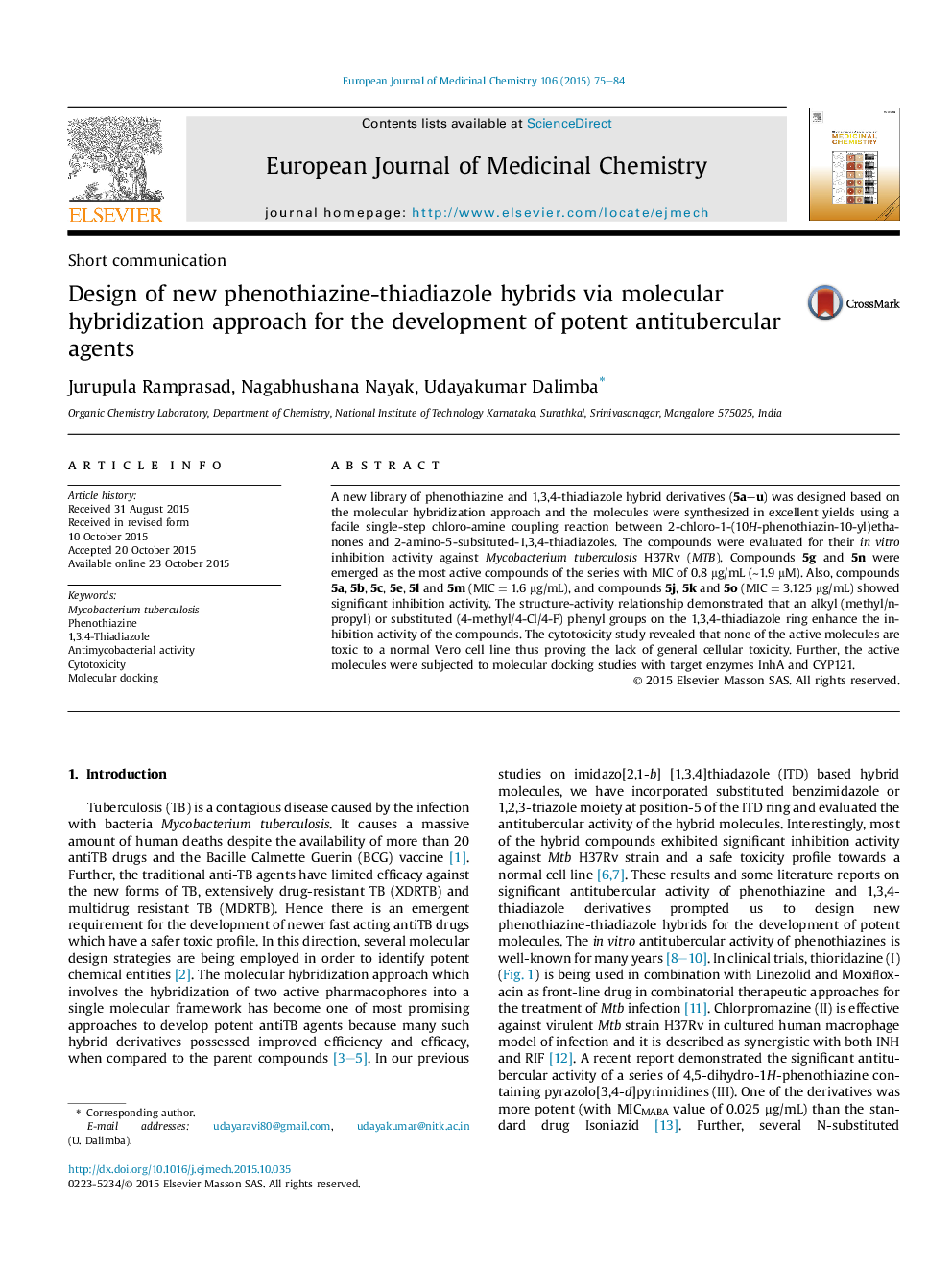| Article ID | Journal | Published Year | Pages | File Type |
|---|---|---|---|---|
| 1398728 | European Journal of Medicinal Chemistry | 2015 | 10 Pages |
•21 New phenothiazine and 1,3,4-thiadiazole hybrid derivatives were synthesized.•Molecular hybridization of two pharmacophores yielded potent antiTB agents.•11 Compounds showed significant inhibitory activity with MIC ≤3.125 μg/mL.•The most potent compounds showed MIC of 0.8 μg/mL.•All the potent compounds are nontoxic to a Vero normal cell line.
A new library of phenothiazine and 1,3,4-thiadiazole hybrid derivatives (5a–u) was designed based on the molecular hybridization approach and the molecules were synthesized in excellent yields using a facile single-step chloro-amine coupling reaction between 2-chloro-1-(10H-phenothiazin-10-yl)ethanones and 2-amino-5-subsituted-1,3,4-thiadiazoles. The compounds were evaluated for their in vitro inhibition activity against Mycobacterium tuberculosis H37Rv (MTB). Compounds 5g and 5n were emerged as the most active compounds of the series with MIC of 0.8 μg/mL (∼1.9 μM). Also, compounds 5a, 5b, 5c, 5e, 5l and 5m (MIC = 1.6 μg/mL), and compounds 5j, 5k and 5o (MIC = 3.125 μg/mL) showed significant inhibition activity. The structure-activity relationship demonstrated that an alkyl (methyl/n-propyl) or substituted (4-methyl/4-Cl/4-F) phenyl groups on the 1,3,4-thiadiazole ring enhance the inhibition activity of the compounds. The cytotoxicity study revealed that none of the active molecules are toxic to a normal Vero cell line thus proving the lack of general cellular toxicity. Further, the active molecules were subjected to molecular docking studies with target enzymes InhA and CYP121.
Graphical abstractFigure optionsDownload full-size imageDownload as PowerPoint slide
